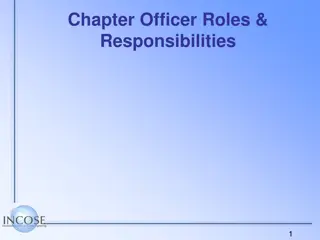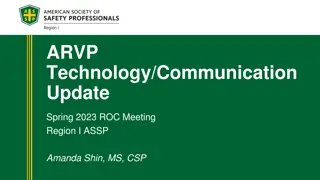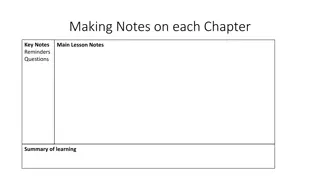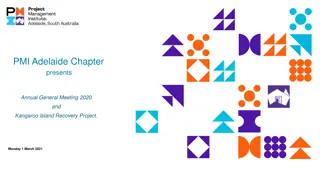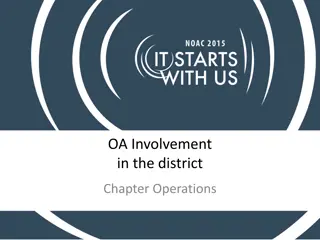
Understanding Internet Networking Basics
Learn the fundamentals of internet networking, including sockets, data transmission, IP protocol, DNS, and more. Discover how computers communicate across the internet and the role of IP addresses and domain naming services.
Download Presentation

Please find below an Image/Link to download the presentation.
The content on the website is provided AS IS for your information and personal use only. It may not be sold, licensed, or shared on other websites without obtaining consent from the author. If you encounter any issues during the download, it is possible that the publisher has removed the file from their server.
You are allowed to download the files provided on this website for personal or commercial use, subject to the condition that they are used lawfully. All files are the property of their respective owners.
The content on the website is provided AS IS for your information and personal use only. It may not be sold, licensed, or shared on other websites without obtaining consent from the author.
E N D
Presentation Transcript
Chapter Goals To understand the concept of sockets To send and receive data through sockets To implement network clients and servers To communicate with web servers and server-side applications through the Hypertext Transfer Protocol (HTTP)
The Internet Protocol Internet: A worldwide collection of networks, routing equipment, and computers. Uses a common set of protocols to define how the parties will interact with each other. Data transmission consists of sending/receiving streams of zeroes and ones along the network connection.
The Internet Protocol Two types of information: Application data: information one computer wants to send to another. Network protocol data: describes how to: Reach the intended computer. Check for errors & data loss in the transmission. Network protocol: rules for protocol data. Most common: Internet Protocol (IP). Developed to enable different local area networks to communicate with each other. Has become the basis for connecting computers around the world together over theInternet.
Two Computers Communicating Across the Internet Figure 1 Two Computers Communicating Across the Internet A is your home computer. Connected to an Internet service provider (ISP). ISP is connected to an Internet access point. B is on an local area network at XYZ Computers. XYZ has its own Internet access point. Internet access points are connected by a complex collection of pathways (the Internet). Message sent from one access point can eventually reach any access point over these pathways.
Destination Address Data must be marked with a destination address. In IP, addresses are denoted by a sequence of four numbers. Each is one byte (a number between 0 and 255). E.g.,130.65.86.66. To be able to accommodate more devices, IP addresses will be extended to sixteenbytes. To send data to B, A needs to know B s Internet address. A includes that address in the network protocol portion when sending the data.
Domain Naming Service In addition to an IP address, computers can have an easy-to- remember domain name. E.g.,horstmann.com. Domain Naming Service (DNS): translates from domain name toIP address. When A wants to request data from a domain name: It asks the DNS for the numeric Internet Address. It includes the numeric address with the request for data.
Packets IP breaks large chunks of data up into more manageable packets. Each packet is delivered separately. Each packet in a larger transmission may be sent by a different route. Packets are numbered. The recipient reassembles them in the right order.
Transmission Control Protocol Internet Protocol (IP) does not notify the sender if data is lost or garbled. This is the job of a higher level protocol Transmission Control Protocol (TCP). Used by most popular Internet services WWW & e-mail. Bypassed by streaming media services for highest possible throughput. Most commonly used combination is TCP with IP (TCP/IP).
Port Numbers One computer can offer multiple services over the Internet. E.g., both a web server program and a mail server program. When data are sent to that computer, they need to indicate which program is to receive the data. IP uses port numbers for this: Integer between 0 and 65,535. Sending program must know port number of receiving program. Port number is included in the transmitted network protocol data.
Contents of TCP Packets Must include: Internet address of recipient. Port number of recipient. Internet address of sender. Port number of sender.
Self Check 23.1 What is the difference between an IP address and a domain name? Answer: An IP address is a numerical address, consisting of four or sixteen bytes. A domain name is an alphanumeric string that is associated with an IP address.
Self Check 23.2 Why do some streaming media services not use TCP? Answer: TCP is reliable but somewhat slow. When sending sounds or images in real time, it is acceptable if a small amount of the data is lost. But there is no point in transmitting data that is late.
Application Level Protocols TCP/IP mechanism establishes an Internet connection between two ports on two computers. Each Internet application has its own application protocol. Describes how data for that application are transmitted.
Hypertext Transfer Protocol (HTTP) Application protocol used by the World Wide Web. A web address is called a Uniform Resource Locator (URL). You type a URL into the address window of your browser. E.g., http://horstmann.com/index.html.
Browser Steps in Loading URL Examines the part of the URL between the double slash and the first single slash (horstmann.com). This identifies the computer to which you want to connect. Because it contains letters, this part of the URL is a domain name, not an IP address. Browser sends request to a DNS server to obtain IP address for horstmann.com. From http: prefix, deduces protocol is HTTP. Uses port 80 by default. Establishes a TCP/IP connection to port 80 at IP address obtained in Step 1.
Browser Steps in Loading URL Deduces from the /index.html that you want to see the file /index.html and sends this request formatted as an HTTP command through the established connection. GET /index.html HTTP/1.0 Host: horstman.com blank line Web server running on computer whose IP Address was obtained above receives the request. It decodes the request. It fetches the file /index.html. It sends the file back to the browser on your computer.
Browser Steps in Loading URL Browser displays contents of the file: Since this file is an HTML file, it translates the HTML codes into fonts, bullets, etc. If the file contains images, it makes more GET requests through the same connection.
Telnet Telnet program allows you to: Type characters to send to a remote computer. View the characters that the remote computer sends back. It is a useful tool to establish test connections with servers. You can imitate the browser connection by using a dialog box or typing at the command line: telnet horstmann.com 80
Telnet After Telnet starts, type the following without using backspace: GET / HTTP/1.0 Host: horstmann.com Then press the Enter key twice. The server responds to the request with the file. Telnet is not a browser. It does not understand HTML tags so it just displays everything it was sent.
Telnet Figure 2 Using Telnet to Connect to a Web Server
HTTP and HTML Do not confuse HTTP with HTML. HTML is a document format that describes the structure of a document. HTTP is a protocol that describes the command set for web server requests. Web browsers: Know how to display HTML documents. And how to issue HTTP commands. Web servers: Know nothing about HTML. Merely understand HTTP and know how to fetch the requested items.
Application Level Protocols HTTP is one of many application protocols in use on the Internet. Another commonly used protocol is the Post Office Protocol (POP). POP is used to download received messages from e-mail servers. To send messages, you use another protocol: Simple Mail Transfer Protocol (SMTP).
Sample POP Session Figure 3 A Sample POP Session
Self Check 23.3 Why don t you need to know about HTTP when you use a web browser? Answer: The browser software translates your requests (typed URLs and mouse clicks on links) into HTTP commands that it sends to the appropriate web servers.
Self Check 23.4 Why is it important that you don t make typing errors when you type HTTP commands in Telnet? Answer: Some Telnet implementations send all keystrokes that you type to the server, including the backspace key. The server does not recognize a character sequence such as G W Backspace E T as a valid command.
A Client Program Task: write a Java program that: Establishes a TCP connection to a server. Sends a request to the server. Prints the response.
Sockets A socket is an object that encapsulates a TCP/IP connection. There is a socket on both ends of a connection. Create a socket in a Java program: Socket s = new Socket(hostname, portnumber); Connect to the HTTP port of server, horstmann.com: final int HTTP_PORT = 80; Socket s = new Socket("horstmann.com", HTTP_PORT); If it can t find the host, the Socket constructor throws an UnknownHostException.
Input and Output Streams Use the input and output streams attached to the socket to communicate with the other endpoint. Obtain the input and output streams: InputStream instream = s.getInputStream(); OutputStream outstream = s.getOutputStream(); When you send data to outstream, the socket forwards them to the server. The socket catches the server s response and you can read it through instream. When you are done communicating with the server, close the socket. Best done using a try-with-resources statement: try (Socket s = . . . ) { . . . } // s.close() called here
Client and Server Sockets Figure 4 Client and Server Sockets
Scanners and Writers InputStream and OutputStream send and receive bytes. To send and receive text, use a scanner and a writer: Scanner in = new Scanner(instream); PrintWriter out = new PrintWriter(outstream); A PrintWriterbuffers the characters and only sends when the buffer is full. Buffering increases performance. When sending a command, you want the whole command to be sent now. Flush the buffer manually: out.print(command); out.flush();
WebGet Program Program lets you retrieve any item from a web server. Specify the host and item (separated by a space) from the command line; e.g.: java WebGet horstmann.com / The "/" denotes the root page of the web server that listens to port 80 of horstmann.com. Program: Establishes a connection to the host. Sends a GET command to the host. Receives input from the server until the server closes its connection.
section_3/WebGet.java 1 2 3 4 5 6 7 8 9 import java.io.InputStream; import java.io.IOException; import java.io.OutputStream; import java.io.PrintWriter; import java.net.Socket; import java.util.Scanner; /** This program demonstrates how to use a socket to communicate with a web server. Supply the name of the host and the resource on the command-line, for example java WebGet horstmann.com index.html 10 11 12 13 14 15 16 17 18 19 20 21 22 23 24 25 */ public class WebGet { public static void main(String[] args) throws IOException { //Get command-line arguments String host; String resource; if (args.length == 2) { host = args[0]; Program Run: Getting / from horstmann.com HTTP/1.1 200 OK Date: Thu, 09 Apr 2015 14:15:04 GMT Server: Apache/1.3.41 (Unix) Sun-ONE-ASP/4.0.2 ... Content-Length: 6654
Content-Type: text/html <html> <head><title>Cay Horstmann's Home Page</title></head> <body> <h1>Welcome to Cay Horstmann's Home Page</h1> ... </body> </html>
Self Check 23.5 What happens if you call WebGet with a nonexistent resource, such as wombat.html at horstmann.com? Answer: The program makes a connection to the server, sends the GET request, and prints the error message that the server returns.
Self Check 23.6 How do you open a socket to read e-mail from the POP server at e-mail.sjsu.edu? Answer: Socket s = new Socket("e-mail.sjsu.edu", 110);
A Server Program Task: write a Java program that: Enables clients to manage a set of bank accounts in a bank. When you develop a server application, you need an application- level protocol. Client can use this protocol to interact with the server.
Server Socket Server waits for clients to connect on a certain port. We choose8888. To listen for incoming connections, use a server socket. To construct a server socket, provide the portnumber: ServerSocket server = new ServerSocket(8888); Use the accept method to wait for client connection and obtain a socket: Socket s = server.accept(); BankService service = new BankService(s, bank);
BankService Program Program carries out the service. Implements the Runnable interface. Its run method will be executed in each thread that serves a client connection. run gets a scanner and writer from the socket, then executes: public void doService() throws IOException { while (true) { if (!in.hasNext()) { return; } String command = in.next(); if (command.equals("QUIT")) { return; } executeCommand(command); } }
executeCommand Method Processes a single command. If the command is DEPOSIT, it carries out the deposit. int account = in.nextInt(); double amount = in.nextDouble(); bank.deposit(account, amount); WITHDRAW is handled in the same way. After each command, the account number and new balance are sent to the client: out.println(account + " " + bank.getBalance(account));
Threads doService returns to the run method if the client closed the connection or the command equals QUIT. Then run closes the socket and exits. How can we support multiple simultaneous clients? Spawn a new thread whenever a client connects. Each thread is responsible for serving one client.
Threads BankService implements Runnable; so, it can start a thread using start on a Thread object. The thread dies when the client quits or disconnects and the run method exits. In the meantime, BankServer loops back to accept the next connection: while (true) { Socket s = server.accept(); BankService service = new BankService(s, bank); Thread t = new Thread(service); t.start(); } The server program never stops. When you are done running the server, you need to kill it.
BankServer Communication Figure 5 Using the Telnet Program to Connect to the Bank Server
section_4/BankServer.java 1 2 3 4 5 6 7 8 9 import java.io.IOException; import java.net.ServerSocket; import java.net.Socket; /** A server that executes the Simple Bank Access Protocol. */ public class BankServer { public static void main(String[] args) throws IOException { final int ACCOUNTS_LENGTH = 10; Bank bank = new Bank(ACCOUNTS_LENGTH); final int SBAP_PORT = 8888; ServerSocket server = new ServerSocket(SBAP_PORT); System.out.println("Waiting for clients to connect..."); 10 11 12 13 14 15 16 17 18 19 20 21 22 23 24 25 26 27 28 29 while (true) { try (Socket s = server.accept()) { System.out.println("Client connected."); BankService service = new BankService(s, bank); Thread t = new Thread(service); t.start(); } } } }
section_4/BankService.java 1 2 3 4 5 6 7 8 9 import java.io.InputStream; import java.io.IOException; import java.io.OutputStream; import java.io.PrintWriter; import java.net.Socket; import java.util.Scanner; /** Executes Simple Bank Access Protocol commands from asocket. 10 11 12 13 14 15 16 17 18 19 20 21 22 23 24 25 26 27 28 29 30 31 32 33 34 35 */ public class BankService implements Runnable { private Socket s; private Scanner in; private PrintWriter out; private Bank bank; /** Constructs a service object that processes commands from a socket for abank. @param aSocket the socket @param aBank the bank */ public BankService(Socket aSocket, Bank aBank) { s = aSocket; bank = aBank; } public void run() { try { in = new Scanner(s.getInputStream());
section_4/Bank.java 1 2 3 4 public class Bank 5 { 6 private BankAccount[] accounts; 7 8 9 10 11 12 13 14 15 16 17 18 19 20 21 22 23 24 25 26 27 28 29 30 31 32 33 34 @param accountNumber the account number /** A bank consisting of multiple bank accounts. */ /** Constructs a bank account with a given number of accounts. @param size the number of accounts */ public Bank(int size) { accounts = new BankAccount[size]; for (int i = 0; i < accounts.length; i++) { accounts[i] = new BankAccount(); } } /** Deposits money into a bank account. @param accountNumber the account number @param amount the amount to deposit */ public void deposit(int accountNumber, double amount) { BankAccount account = accounts[accountNumber]; account.deposit(amount); } /** Withdraws money from a bank account.
section_4/BankClient.java 1 2 3 4 5 6 7 8 9 import java.io.InputStream; import java.io.IOException; import java.io.OutputStream; import java.io.PrintWriter; import java.net.Socket; import java.util.Scanner; /** This program tests the bank server. */ public class BankClient { public static void main(String[] args) throws IOException { final int SBAP_PORT = 8888; try (Socket s = new Socket("localhost", SBAP_PORT)) { InputStream instream = s.getInputStream(); OutputStream outstream = s.getOutputStream(); Scanner in = new Scanner(instream); PrintWriter out = new PrintWriter(outstream); 10 11 12 13 14 15 16 17 18 19 20 21 22 23 24 25 26 String command = "DEPOSIT 3 1000\n"; System.out.print("Sending: " + command); out.print(command); out.flush(); Program Run: Sending: DEPOSIT 3 1000 Receiving: 3 1000.0 Sending: WITHDRAW 3 500 Receiving: 3 500.0 Sending: QUIT
Self Check 23.7 Why didn t we choose port 80 for the bank server? Answer: Port 80 is the standard port for HTTP. If a web server is running on the same computer, then one can t open a server socket on an open port.

